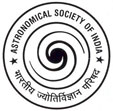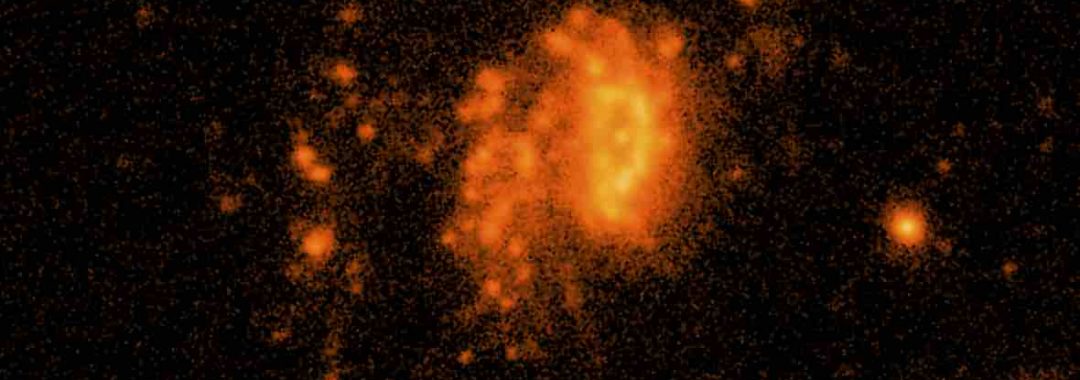April 2018:
The AstroSat Picture of the Month for April 2018 is the ultra-violet image of the Jellyfish Galaxy JO201, using ASTROSAT. This image shows hot young stars formed in the tentacles, visible to the left of the parent galaxy. These have been formed from the gas stripped from JO201 as it falls through the galaxy cluster.
(Picture Credits: This image is from the work done as part of an international collaboration (GASP) )
To download a high resolution image, see link.


“AstroSat Picture of the Month” is an initiative of the Public Outreach and Education Committee of the Astronomical Society of India and the AstroSat Training and Outreach Team.
A Jellyfish in the Sky
Jellyfish are gelatinous creatures of the sea, but did you know that there are giant jellyfish in the sky as well? Here we present an ultraviolet image of one such 'Jellyfish Galaxy', JO201. We know that galaxies usually cluster together because of their mutual gravity. These Galaxy Clusters can have 100s to 1000s of galaxies in them! In these clusters, the space between these galaxies is filled with very hot gas. When an external galaxy is attracted by the gravitational force of a cluster, it moves through this hot gas. When it does so, it feels this gas as a wind that is blowing against it, much like a bicyclist or a runner feels the air blowing back past them.
If the galaxy is falling fast enough through this gas, then this wind can even dislodge the gas from this galaxy's gravitational pull. This stripped-off gas forms tails behind the infalling galaxy, and new stars can form out of this gas. Hence, these galaxies resemble a jellyfish with tentacles. We know a number of such jellyfish galaxies in the sky, and this image shows JO201, one such galaxy falling into the galaxy cluster Abell 85. The ultraviolet image taken by AstroSat shows the hot young stars formed from the gas that have been pushed out of this galaxy. The galaxy JO201 itself is moving in a direction towards us with an inclination towards the right.
Koshy and his collaborators have used the superior resolution of UVIT to study how stars are being formed in individual parts of the tentacles of the jellyfish galaxy JO201. The paper describing their work can be found here.
Click here for the entire APOM archive and here to return to the latest APOM.
More about ASTROSAT
AstroSat, India's first dedicated multi-wavelength space observatory, was launched by ISRO on 28 September, 2015. It has five instruments on board – the Ultra Violet Imaging Telescope, the Soft X-ray Telescope, the Large Area X-ray Proportional Counter, the Cadmium-Zinc-Telluride Imager and the Scanning Sky Monitor.
Get answers to your common queries about ASTROSAT in English, in हिंदी, and in मराठी.

